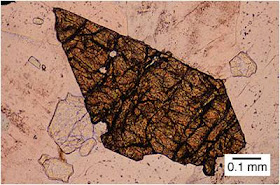Buwat teman-teman yang punya keinginan jalan-jalan keliling Indonesia tapi tidak punya uang, berikut ini ada kesempatan menarik yang sayang kalau dilewatkan.............
Tentang ACI
detikcom kembali menyelenggarakan program Aku Cinta Indonesia (ACI). Tahun 2011 ini kami mencari 60 orang yang akan dibagi menjadi 20 tim (masing-masing tim 3 orang) untuk disebar ke seluruh penjuru negeri. Seluruh biaya transportasi, akomodasi, dan uang saku yang dibutuhkan dalam perjalanan akan ditanggung oleh detikcom. 20 tim adalah para Petualang ACI yang akan menyebarkan semangat Aku Cinta Indonesia dengan berbagi cerita dan pengalaman.Frequently Asked Questions
• Bagaimana cara untuk ikut dalam program ini?
Anda cukup mengisi formulir pendaftaran. Masukkan data pribadi, keahlian serta jelaskan mengapa Anda yang harus kami pilih.
• Kriteria apa yang diperlukan supaya saya bisa menang?
Yang pasti, Anda harus suka berpetualang! Keahlian seperti renang, fotografi, menyelam, dan lain-lain memang penting, tapi bukan faktor utama dalam menentukan pemenang. Kami mencari petualang yang sangat antusias menjelajah Indonesia dan dapat berbagi cerita perjalanannya.
• Ada berapa tahapan pada program Aku Cinta Indonesia 2011?- Tahap Registrasi (Juni 2011)
- Pengumuman 750 Semi Finalis
- Wawancara
- Pengumuman 60 Petualang ACI
- Perjalanan 20 Tim ACI ke 20 area (September - Oktober 2011)
• Apa kewajiban saya jika terpilih sebagai salah satu Petualang ACI?
Kewajibannya adalah bersenang-senang dalam perjalanan Anda dan berbagi cerita kepada pembaca detikcom melalui tulisan dan foto.
• Apa yang berbeda dari ACI 2011 ini dibandingkan tahun lalu?
Tahun ini ada 60 Petualang yang terpilih untuk disebar ke 20 area wisata yang belum banyak ter-explore. Masing-masing tim terdiri dari 3 orang. Hadiah yang akan diperebutkan lebih banyak dari tahun lalu:
- Tim Terbaik dengan hadiah senilai Rp 100 Juta
- Foto Esai Terbaik (Individual) senilai Rp 25 Juta
- Tim Favorit pembaca senilai Rp 15 Juta
• Bagaimana cara meraih hadiah utama Rp 100 Juta?Setelah seluruh perjalanan berakhir, tim dengan catatan perjalanan terbaik menurut penilaian juri (tim redaksi) akan meraih uang tunai Rp 100 Juta.
• Apa yang dimaksud dengan 'Foto Esai (Individual)'?Masing-masing petualang bercerita kepada pembaca dalam bentuk foto berseri hasil selama perjalanan program Aku Cinta Indonesia. Foto terbaik menurut penilaian juri akan meraih uang senilai Rp 25 Juta.
• Berapa lama dan kapan perjalanan akan berlangsung?20 tim akan diberangkatkan pada periode perjalanan September - Oktober 2011. Masing-masing akan melakukan perjalanan selama 17-21 hari. Jadi, kalau Anda berstatus karyawan persiapkan cuti Anda!
• Syarat dan Ketentuan- Hadiah tidak dapat dialihkan dan tidak dapat ditukar dalam bentuk apapun
- Penetapan pemenang sifatnya mutlak serta tidak dapat diganggu-gugat
- Peserta wajib mengikuti aturan main yang ditetapkan pihak penyelenggara
- Apabila peserta didapati menyalahi aturan main yang ditetapkan maka pihak penyelenggara berhak memberikan sanksi kepada peserta
- Penyelenggara berhak membatalkan kemenangan peserta dan mengalihkan ke peserta yang lainnya apabila peserta yang telah dinyatakan sebagai pemenang melanggar aturan-aturan yang diberikan
- Penginformasian data diri pemenang yang tidak akurat dan atau direkayasa akan membatalkan hak kemenangannya
- Bagi pemenang yang telah dihubungi penyelenggara dan telah dinyatakan keluar sebagai pemenang serta berhak atas hadiah yang telah disebutkan tetapi menolak hadiah dan kemenangan tersebut, maka secara otomatis kemenangan dan hadiah tersebut akan dialihkan kepada calon pemenang berikutnya
- Periode dan peraturan program dapat berubah sewaktu-waktu oleh pihak penyelenggara tanpa pemberitahuan terlebih dahulu
Untuk informasi lebih lanjut, email: aci@detik.com
• Ada berapa tahapan pada program Aku Cinta Indonesia 2011?
- Tahap Registrasi (Juni 2011)
- Pengumuman 750 Semi Finalis
- Wawancara
- Pengumuman 60 Petualang ACI
- Perjalanan 20 Tim ACI ke 20 area (September - Oktober 2011)
- Tim Terbaik dengan hadiah senilai Rp 100 Juta
- Foto Esai Terbaik (Individual) senilai Rp 25 Juta
- Tim Favorit pembaca senilai Rp 15 Juta
• Syarat dan Ketentuan
- Hadiah tidak dapat dialihkan dan tidak dapat ditukar dalam bentuk apapun
- Penetapan pemenang sifatnya mutlak serta tidak dapat diganggu-gugat
- Peserta wajib mengikuti aturan main yang ditetapkan pihak penyelenggara
- Apabila peserta didapati menyalahi aturan main yang ditetapkan maka pihak penyelenggara berhak memberikan sanksi kepada peserta
- Penyelenggara berhak membatalkan kemenangan peserta dan mengalihkan ke peserta yang lainnya apabila peserta yang telah dinyatakan sebagai pemenang melanggar aturan-aturan yang diberikan
- Penginformasian data diri pemenang yang tidak akurat dan atau direkayasa akan membatalkan hak kemenangannya
- Bagi pemenang yang telah dihubungi penyelenggara dan telah dinyatakan keluar sebagai pemenang serta berhak atas hadiah yang telah disebutkan tetapi menolak hadiah dan kemenangan tersebut, maka secara otomatis kemenangan dan hadiah tersebut akan dialihkan kepada calon pemenang berikutnya
- Periode dan peraturan program dapat berubah sewaktu-waktu oleh pihak penyelenggara tanpa pemberitahuan terlebih dahulu
More info : http://aci.detik.travel/about










































